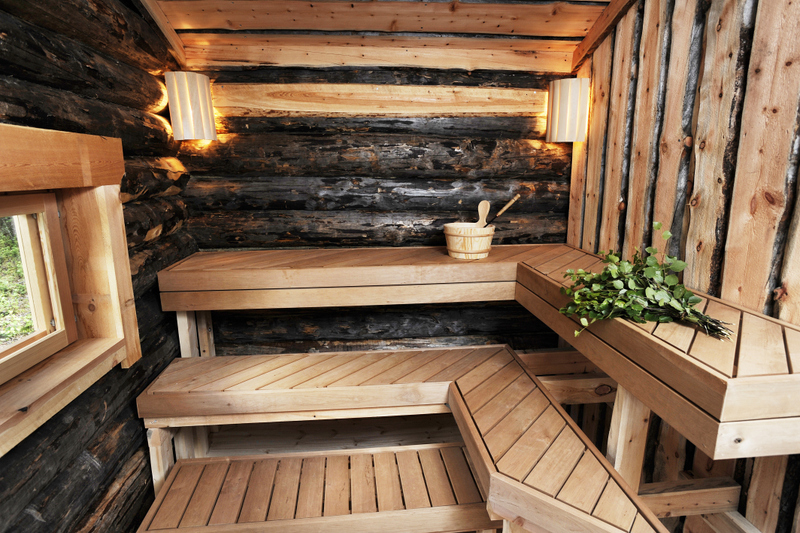What Does Traditional Sauna Mean?
What Does Traditional Sauna Mean?
Blog Article
8 Easy Facts About Traditional Sauna Described
Table of ContentsWhat Does Traditional Sauna Do?The Single Strategy To Use For Traditional SaunaSome Known Details About Traditional Sauna Things about Traditional SaunaTraditional Sauna for Dummies
A lot of the weight lost in a sauna is water loss and is re-gained upon rehydrating. However, without a doubt sauna can be an integral part of a healthy fat burning program. To look at the distinctions between typical and IR saunas, I will certainly separate these right into verifiable, academic, and fabricated distinctions.Therefore, the hottest factor in the saunawhich is at the ceiling straight above the sauna heateris commonly between 185 and 190 F. Claims that a traditional sauna goes beyond 200 F is simply not real and not appropriate for electrical saunas offered in the United States. The temperature for a far-infrared sauna is generally set in between 120 and 140 F; however, unlike the standard sauna, the goal in and IR space is not to achieve a heat.
Due to this, the temperature distinction is practically unnecessary, because excessive sweating results in both sauna types, yet the method of heating up the body is various. In an IR sauna the bather will certainly feel warm and will certainly sweat profusely, however at a lot reduced temperatures (Traditional Sauna). Therefore, if the objective is to invest longer time periods in the sauna, the IR sauna is a great selection
When a conventional sauna has actually been effectively heated, the sauna walls are cozy, the air temperature level has achieved set temperature level and the rocks are extremely warmed. As an interesting side note, the warmed walls and the rocks are emitting far-infrared warmth, combined with the warmed air, to create an "covering warm".
A Biased View of Traditional Sauna

When the high temperature level is accomplished, the aspects cycle on and off to maintain the heat. The majority of typical sauna individuals delight in pouring water over the rocks to develop heavy steam to increase sauna moisture degrees. The benefits of putting water over the rocks consist of: making the room more comfy, moistening the nasal flows, and enabling the use of aromatherapy by blending important oils with the water.

When the energy gets in the body, it causes the body temperature to enhance and ultimately results in perspiration. In an infrared sauna it is necessary for the emitters/heaters to remain on virtually continuously. Given that there is no mass of rocks to keep warmth, the sauna will cool down if the emitters shut down.
As discussed over, the sauna bather in an infrared room intends to place himself before operating emitters to obtain optimal take advantage of the warm. The home heating time for both spaces can be really various, depending on exactly how the areas are used. For a standard sauna, a bather should enable 30-40 mins for the area to achieve a desired temperature and to effectively pre-heat the rocks.
Some Known Questions About Traditional Sauna.
A well built sauna will usually accomplish a temperature level of 150-160 F in concerning 30-40 minutes. For hotter temperature levels, the space might require to heat for a longer duration.

Traditional saunas have a tendency to be larger (thus utilize more power) than infrared saunas, although standard saunas are absolutely offered in one and 2 individual dimensions. For a two-person traditional sauna, 5x6 or 5x7 dimension is most prominent. The top bench can easily seat 2 or 3 people and is likewise long sufficient to rest throughout the sauna session.
Some Known Details About Traditional Sauna
The ordinary cost per kWH of electrical energy in the U.S. is around $0.11, so a 4.5 kW heater will cost approximately $.50 to run for one hour, if the heating system runs constantly for one hour. Typically a sauna heating unit will certainly compete 75% of the very first hour and 50% of succeeding hours on because the components cycle once the set temperature level is attained.

There go to the website is a seldom discussed distinction in the social experience between the two rooms. While our culture has shed several of the social advantage of the standard sauna experience, it can be very socially fulfilling (Traditional Sauna). From household time in the sauna, to heart-felt conversations with considerable others, to sauna partiesthe conventional sauna Related Site experience can result in intimate interacting socially
Not known Facts About Traditional Sauna
Most greater end infrared rooms consist of colored light treatment, sound systems and full-glass fronts.
Report this page